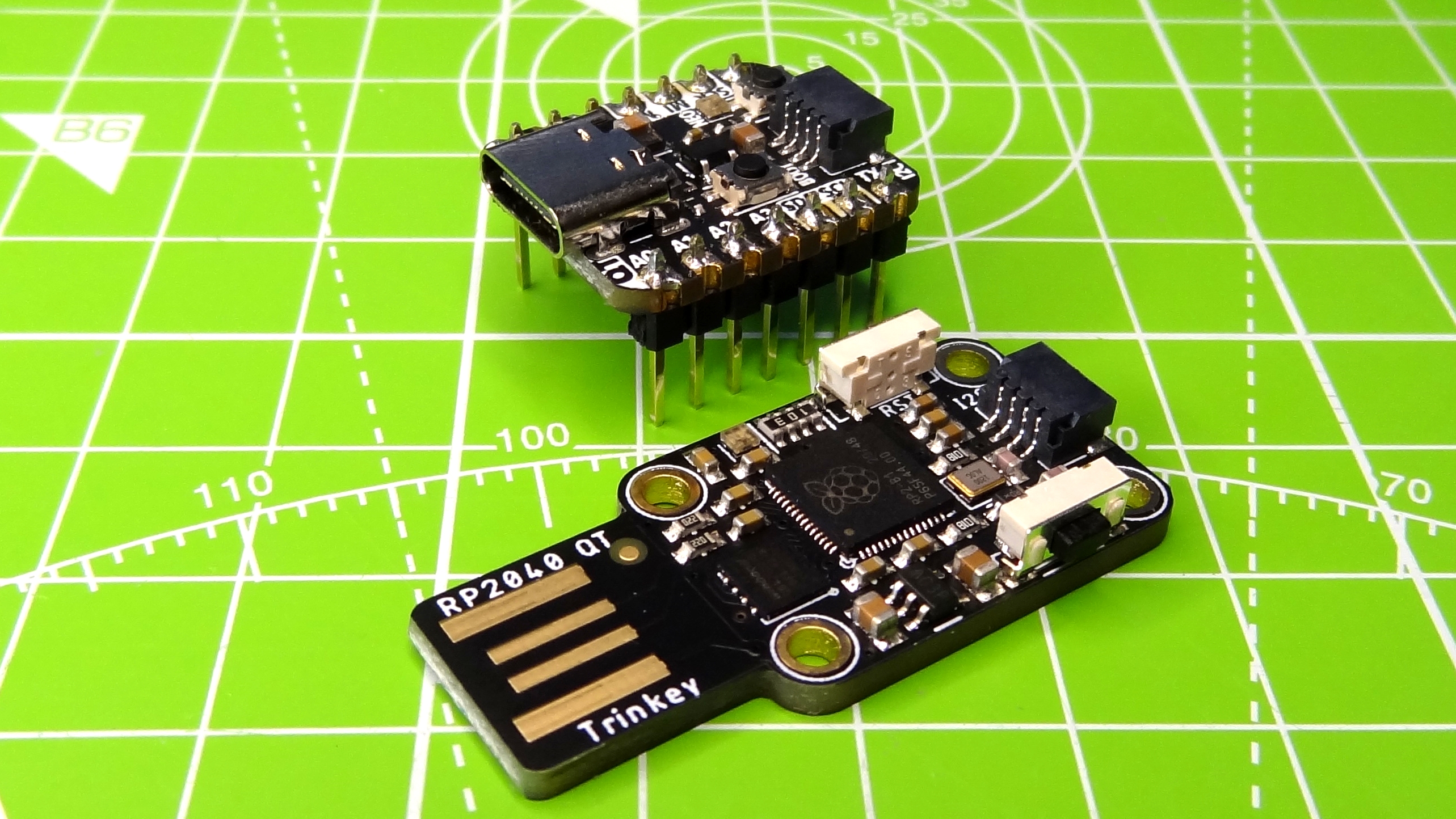Tom's Hardware Verdict
It may not be for everyone, but for those that need a compact RP2040 board with access to a large range of sensors, Trinkey QT2040 is a solid choice that will get the job done.
Pros
- +
+ Easy to use
- +
+ M2.5 mounting holes
- +
+ Stemma QT / Qwiic
Cons
- -
Little to no GPIO
Why you can trust Tom's Hardware
Adafruit have taken Raspberry Pi’s RP2040, the same SoC found in the Raspberry Pi Pico, and placed it into something different. A USB key shaped device with no GPIO and limited connectivity. What were they thinking? Adafruit have created a range of RP2040 powered boards, from their smallest, QT Py RP2040 to their largest Feather RP2040 all feature a selection of GPIO pins and most come with extra features.
For Adafruit’s latest RP2040 board we have a board designed around Adafruit’s Trinkey form factor that sees a Trinket style device merged with the convenience of a USB key. Trinkey QT2040 is designed for plug and play use and can be connected to any computer running any operating system.
Trinkey QT2040 offers a quick and simple means to build projects with the power of the RP2040 and so we did just that with a series of sensors connected via the handy Stemma Q / Qwiic connector.
Adafruit Trinkey QT2040 Hardware Specifications
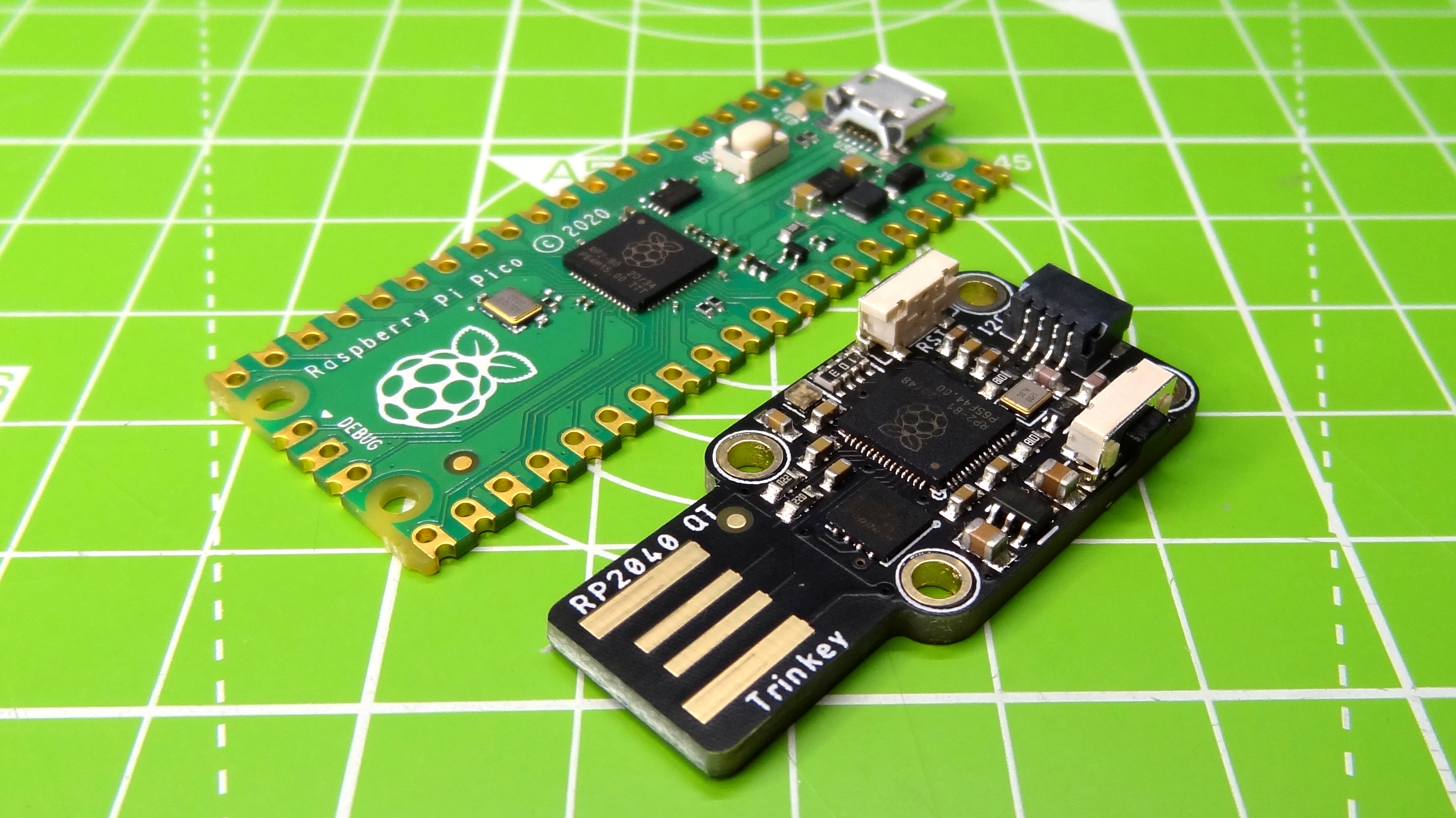
| System on Chip | RP2040 microcontroller chip designed by Raspberry Pi in the United Kingdom. Dual-core Arm Cortex M0+ processor, flexible clock running up to 133 MHz. 264KB of SRAM, and 8MB of on-board Flash memory | Row 0 - Cell 2 |
| GPIO | STEMMA QT / Qwiic port for I2C connectivity NeoPixel (WS2812B) RGB LED User programmable BOOT button | Row 1 - Cell 2 |
| Power / USB | USB A built into extra thick PCB | Row 2 - Cell 2 |
| Dimensions | 1 x 0.7 inches (2.54 x 17.8 mm) | Row 3 - Cell 2 |
Design and Use of the Adafruit Trinkey QT2040
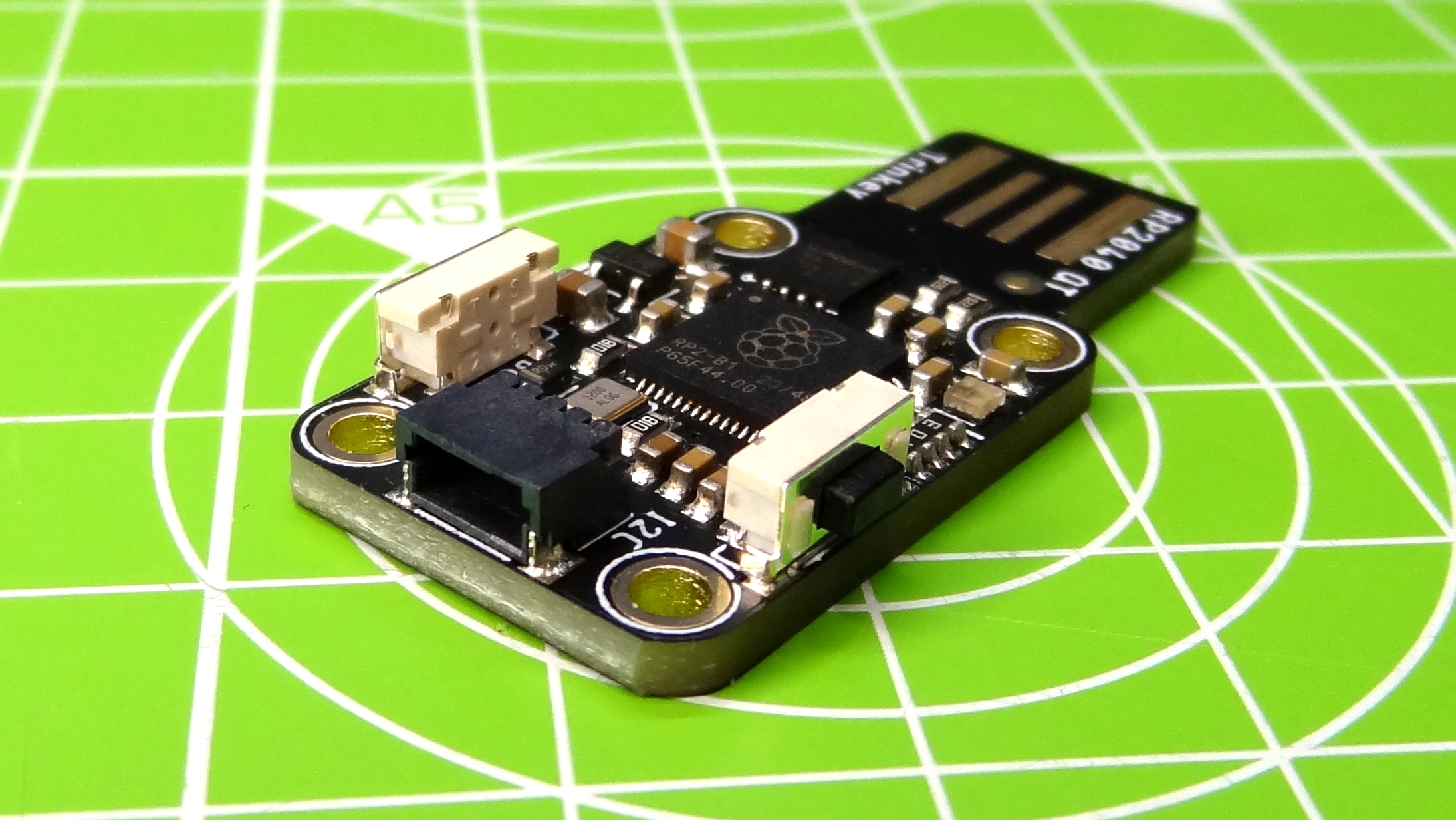
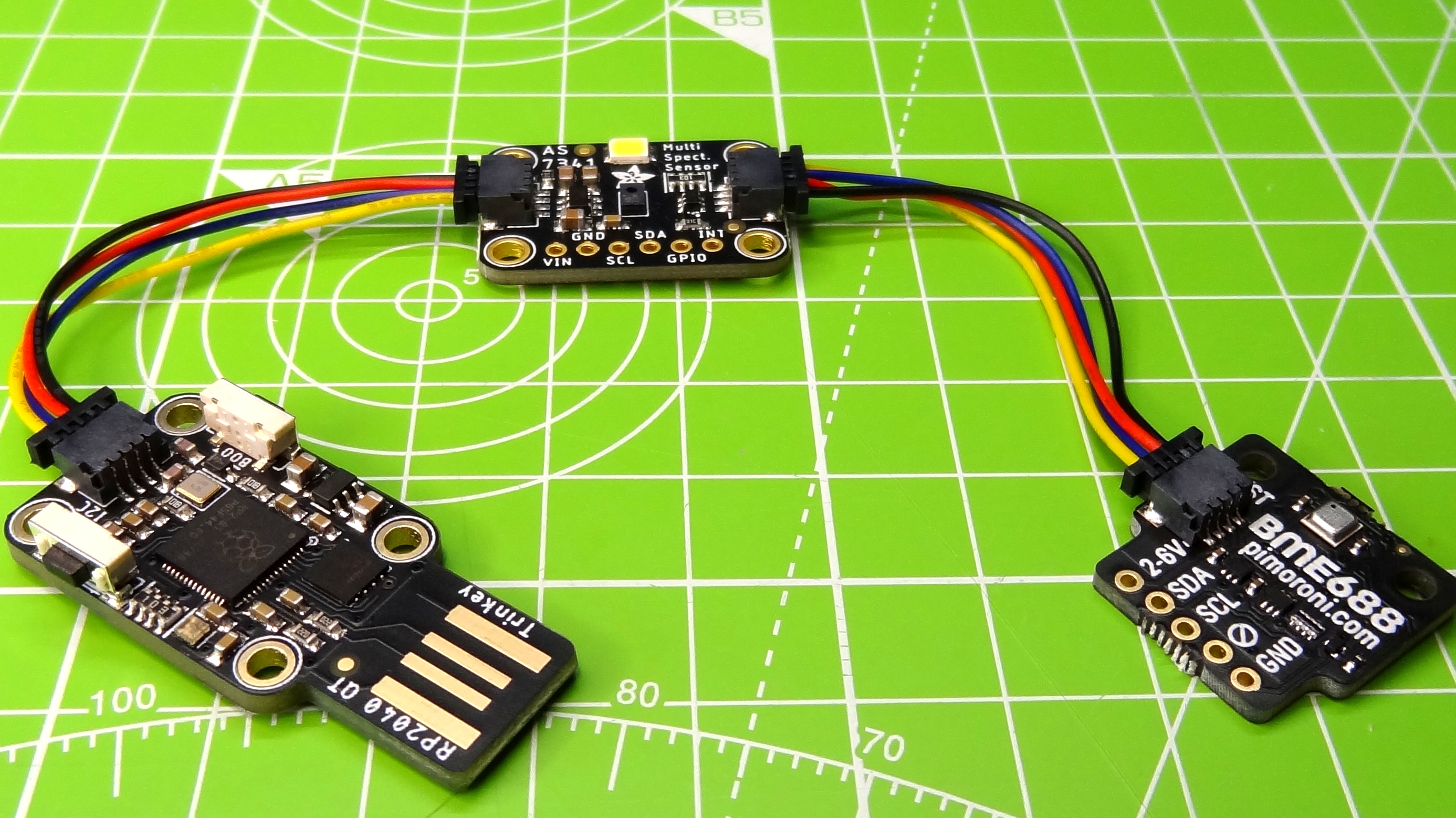
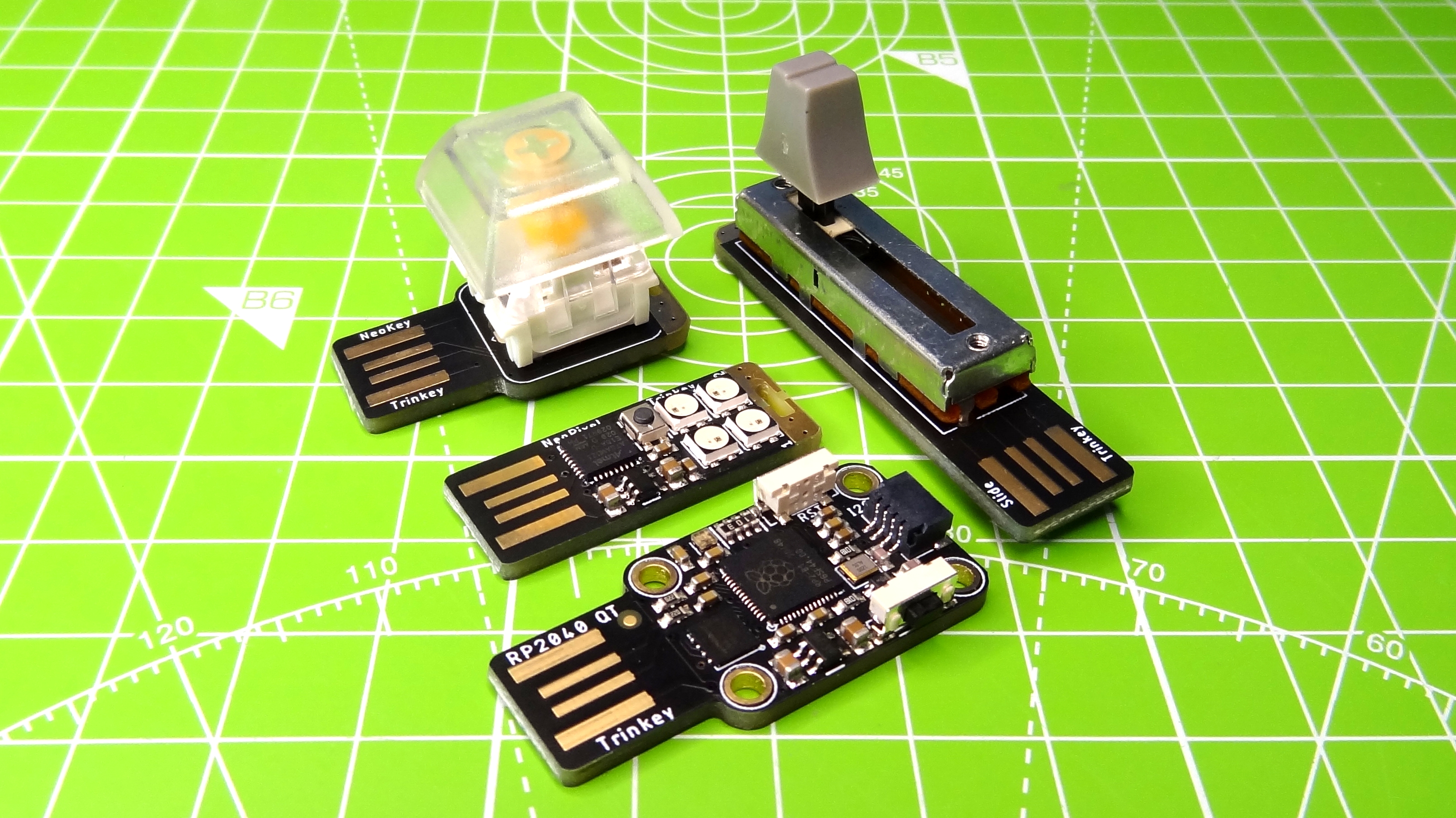
Quite obviously Adafruit’s Trinkey QT2040 centers on the USB-A connection. No trailing wires just plug in and start hacking. Adafruit’s Trinkey range of boards all follow this practice, but the Trinkey QT2040 is the first to be powered by Raspberry Pi’s RP2040 SoC. Previous Trinkeys were powered by an Atmel SAMD21 SoC. Due to Adafruit Trinkey QT2040 size there are no traditional breadboard compatible pins, rather we have a single Stemma QT / Qwiic connector which can be used with compatible devices, including sensors and screens. Stemma QT / Qwiic components can be chained together to build projects, for example we connected an AS7341 10 channel spectrometer and a BME688 air quality sensor to Trinkey QT2040 and read live data, displayed via the Python Shell (REPL). Trinket QT2040 also features a single NeoPixel, which if left unprogrammed will show any errors by blinking the LED for a set number of times, and in a set color. We can use the NeoPixel in our projects thanks to a simple CircuitPython library that abstracts most of the complexities, including abstracting the GPIO pin instead we have a named reference (board.NEOPIXEL). The user programmable BOOT button is typically used to set the board into a mode where new firmware can be flashed. This button can also be used in our projects and it too has an abstracted named reference (board.BUTTON) which can be used to trigger actions in our code.
Physically Trinkey QT2040 is slightly larger than the QT Py RP2040 but this is a good thing as Trinkey QT2040 has been designed to take advantage of many Stemma QT components that have a similar footprint. Using the four M2.5 screw holes we can stack components atop one another and by using short Stemma QT cables we can build neat and powerful projects.
Trinkey QT2040 is compatible with C / C++ and MicroPython, but to get the best from this board we really need to use CircuitPython. With CircuitPython we have an easy to use dialect of Python 3, a large selection of libraries ensuring we can pick up and connect a Stemma QT / Qwiic board and start hacking. CircuitPython is the ideal way to experience Trinkey QT2040.
Use Cases for the Adafruit Trinkey QT2040
The lack of a traditional GPIO is a hindrance for Trinkey QT2040, but it is by no means a write off. The USB form factor means that Trinkey QT2040 can be connected to a computer which requires quick access to a hardware hacking platform. Need to hack some I2C components, Trinkey QT2040 will enable you to plug in and hack. But that is not all that Trinkey QT2040 can do. We can build our project using various Stemma QT / Qwiic boards and connect directly to a USB power bank with no extra wires. An example of this type of project is a data collection device, which uses sensors to retrieve temperature, humidity, air quality and store the data to the generous 8MB of flash storage. We can then retrieve the Trinkey QT2040 project and connect to a computer to interpret the data. The M2.5 mounting holes and Stemma QT connection make this really simple to build and exceptionally uncluttered.
Get Tom's Hardware's best news and in-depth reviews, straight to your inbox.
Bottom Line
Adafruit Trinkey QT2040 is not a board for everyone. The lack of traditional GPIO will put some off, but the convenience of USB A and Stemma QT / Qwiic elevates this board to a Swiss Army Knife of a tool. It has everything that we need to collect data from compatible sensors. It can be powered from any USB port, and it is compact. The Trinkey range of boards are niche, but they get the job done. The USB A connection is extremely welcome and useful but as laptops move towards USB C we ask ourselves if a future version of this board will come with the newer connection?

Les Pounder is an associate editor at Tom's Hardware. He is a creative technologist and for seven years has created projects to educate and inspire minds both young and old. He has worked with the Raspberry Pi Foundation to write and deliver their teacher training program "Picademy".
